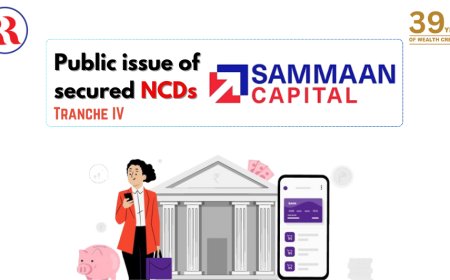Real Tactics Behind Breakout Web3 Marketing Campaigns

Introduction:
In a space as volatile and fast-moving as Web3, creating noise isnt the challengegetting heard is. Every day, new crypto tokens are launched, NFT projects are minted, and platforms promise revolutionary tech. Yet, only a fraction of these efforts break through to the public consciousness. The rest fade into the background, lost in a sea of whitepapers, Discord servers, and token drops. What sets apart the campaigns that capture imaginations, build community, and drive adoption? Its not just luck or timingits the combination of strategy, storytelling, and authenticity. In this article, we explore what truly makes Web3 marketing campaigns succeed and why certain tactics continue to outperform others in this decentralized, rapidly evolving ecosystem.
Community First, Product Second
Web3 isnt like traditional tech. In most startups, a product is built first, and then the marketing team figures out how to pitch it. In crypto, community and product are deeply intertwinedcommunity often is the product. Successful campaigns don't just advertise their token or app; they foster an ecosystem of believers before even going live. Whether its through Telegram, Discord, or X (formerly Twitter), the best Web3 campaigns begin by cultivating a group of engaged supporters who understand the mission, contribute feedback, and advocate for the project. These early communities are nurtured with transparency, participation in governance, sneak peeks, and often, token incentives. Instead of broadcasting messages from the top down, effective Web3 teams engage in constant dialogue with their users, turning them into active stakeholders.
A great example of this is Optimism. Rather than operating as a closed team, the project created a movement by involving the community in governance decisions, distributing tokens based on contributions, and consistently reinforcing the collective identity of the Optimism ecosystem. The result? A loyal base that acts as both evangelists and quality control.
From Code to Narrative: Why Storytelling Wins
Web3 projects are built on cutting-edge technology, but users dont connect with codethey connect with meaning. If your campaign focuses only on features and technical jargon, youll alienate the very people you're trying to reach. What works is storytelling: the ability to craft a compelling narrative about why your project matters in the bigger picture. Youre not just launching a DeFi protocolyoure giving users financial freedom. Youre not just minting NFTsyoure enabling ownership in the digital age.
The projects that thrive are those that make people feel something. Ethereum Name Service (ENS), for instance, turned complex blockchain naming infrastructure into a deeply personal conceptown your Web3 identity. This framing was simple, emotional, and instantly graspable. Campaigns that focus on valuesfreedom, transparency, ownership, empowermenttend to travel further than those stuck explaining architecture, gas fees, or consensus mechanisms.
The essence of a great crypto marketing story lies in its ability to bridge the gap between what the technology does and what it means for the user. In Web3, storytelling isnt just marketing fluffits infrastructure for understanding.
Why Influence Starts Small
Celebrity endorsements might work in traditional advertising, but Web3 audiences are notoriously skeptical. Trust is paramount, and it's built from the ground up. They speak the language of the community, they engage directly with their followers, and they dont just promotethey explain, critique, and guide.
Effective campaigns dont aim for one-off mentions by big names; they build relationships with dozens or even hundreds of smaller voices who command real respect. These influencers often help users understand the project, walk through user interfaces, explain tokenomics, and even challenge the roadmapall of which builds credibility.
For instance, Lens Protocol strategically collaborated with respected content creators and Twitter personalities who were already known for discussing decentralized social networks. This grounded, organic exposure was far more impactful than any traditional PR push. The lesson is clear: when you're building in Web3, you don't need mass mediayou need trust nodes.
Culture Is the Campaign
If theres one secret weapon in crypto marketing, its culture. Web3 campaigns that integrate humor, memes, language quirks, and community vibes often spread faster than any polished ad campaign. Culture creates emotional stickiness, turning casual observers into die-hard participants. Projects that embrace internet cultureespecially the meme culture native to cryptocreate symbols and inside jokes that turn their brand into a movement.
Look no further than Dogecoin or PEPE. These projects didn't rely on whitepapers or VC backingthey used humor and irony to build massive followings. Even more serious projects like Polygon and Uniswap incorporate memes and social trends to keep their brand voice relatable and dynamic. Marketing in Web3 isnt about being professional; its about being present, aware of the community mood, current events, and the humor that binds users together.
The best campaigns are not created in corporate boardrooms. Theyre born in Twitter threads, Discord chats, and meme folders.
Campaigns That Feel Like Games
Gamification is one of the most effective ways to turn interest into action. When users are invited to playto complete tasks, earn rewards, and progress along a journeythey become deeply engaged with the brand. And because blockchain enables real digital ownership, these games are more than symbolictheyre economically meaningful.
Platforms like Galxe and Layer3 have capitalized on this trend by offering quest-style marketing campaigns where users complete actions like wallet connections, social follows, or contract interactions in exchange for points, badges, or even tokens. These campaigns create habit-forming behaviors and social validation. Unlike traditional ads, which users passively consume, gamified campaigns invite interaction and offer value in return.
For any project looking to sustain momentum, gamification is no longer optionalits part of the Web3 experience.
The Art of Timing
One often overlooked tactic in successful crypto campaigns is timing. The best marketing doesnt just have the right messageit has the right moment. A perfectly crafted campaign launched during a market downturn can fall flat, while a simpler effort timed to match industry trends can explode.
Smart teams pay attention to the crypto narrative cycle. For instance, launching an L2 protocol during a period of surging gas fees creates relevance. Introducing a staking product just as restaking becomes the hot topic ensures the message resonates. Some projects time their campaigns around major events like ETHGlobal hackathons, Devcon, or trending Twitter discussions to ride the wave of attention.
This kind of strategic awareness allows campaigns to amplify their reach by plugging into larger conversations. In crypto, the window of opportunity is shortbut if you catch it, you ride fast.
Open Source, Open Dialogue
Unlike in Web2, secrecy doesn't foster hype in Web3. Users expect transparency, especially in early stages. Building in publicby openly sharing roadmap updates, development challenges, and progress reportsbuilds trust and invites the community to be part of the journey.
Projects like Zora have done this beautifully. By making their process visible and involving their community in discussions around updates and priorities, theyve turned users into collaborators. Marketing in this context doesnt just happen at launchits ongoing storytelling that builds momentum with every GitHub commit or product update.
Sharing progress also fuels content. Dev logs become blog posts. Roadmaps become Twitter threads. This constant flow of authentic communication helps projects stay top-of-mind without needing to rely on hype alone.
Incentivizing Participation with Smart Token Design
At the heart of many Web3 campaigns is the token itself, not just as a product, but as a marketing vehicle. Airdrops, staking rewards, and token-based access are more than incentives; they are mechanisms for engagement, loyalty, and amplification.
Campaigns that are backed by well-thought-out tokenomics can generate immense traction. Airdrops that reward early adopters, for example, dont just provide valuethey create stories. They reward loyalty, drive buzz, and often go viral as people share their eligibility or rewards online.
Uniswaps airdrop remains one of the most cited examples of effective token-based marketing. By distributing tokens to early users, they sparked massive word-of-mouth promotion, reinforced brand loyalty, and even turned users into token holders with governance rights. It wasnt just a giveawayit was onboarding by empowerment.
Great campaigns use tokens not as bribes, but as bridges between product and community.
Design with Virality in Mind
In Web3, every action should be shareable. Whether its a mint, a vote, or a referral, marketing-savvy projects design their platforms to make participation visible and attractive. Virality doesnt just happenits engineered.
Friend.tech is a prime example. The apps onboarding process included clear, shareable steps that showed progress and exclusivity. Screenshots of people gaining access or purchasing keys circulated rapidly, turning users into marketers without them realizing it.
This approach works because it taps into social proof and FOMOtwo forces that drive engagement in Web3. If your campaign includes tools, assets, or events that users naturally want to share, your reach multiplies exponentially without increasing spend.
Make Education a Central Pillar
Lastly, perhaps the most underrated tactic is education. Many users still struggle to understand blockchain concepts. The more your marketing demystifies your project, the more accessible and compelling it becomes.
Coinbases Learn & Earn campaign revolutionized this by paying users to learn about tokens. But even smaller projects are creating value with educational blog posts, explainer videos, onboarding guides, and Twitter tutorials. The projects that invest in teaching users about wallets, gas, or governance not only gain users, they build advocates.
In Web3, education is activation. The more someone understands your mission and mechanics, the more likely they are to participate, evangelize, and stay.
Conclusion: Strategy Over Hype
Breakout Web3 marketing campaigns arent built on trickstheyre built on truth, timing, and community. Whether its through storytelling, gamification, transparency, or culture, the common thread is simple: connection. The projects that win dont just make noisethey make meaning. They dont chase viralitythey cultivate loyalty.
In a decentralized world where attention is fleeting, only the most thoughtful campaigns rise above the noise. The future belongs to projects that market with purpose, speak with clarity, and build with and for the people they serve.

































